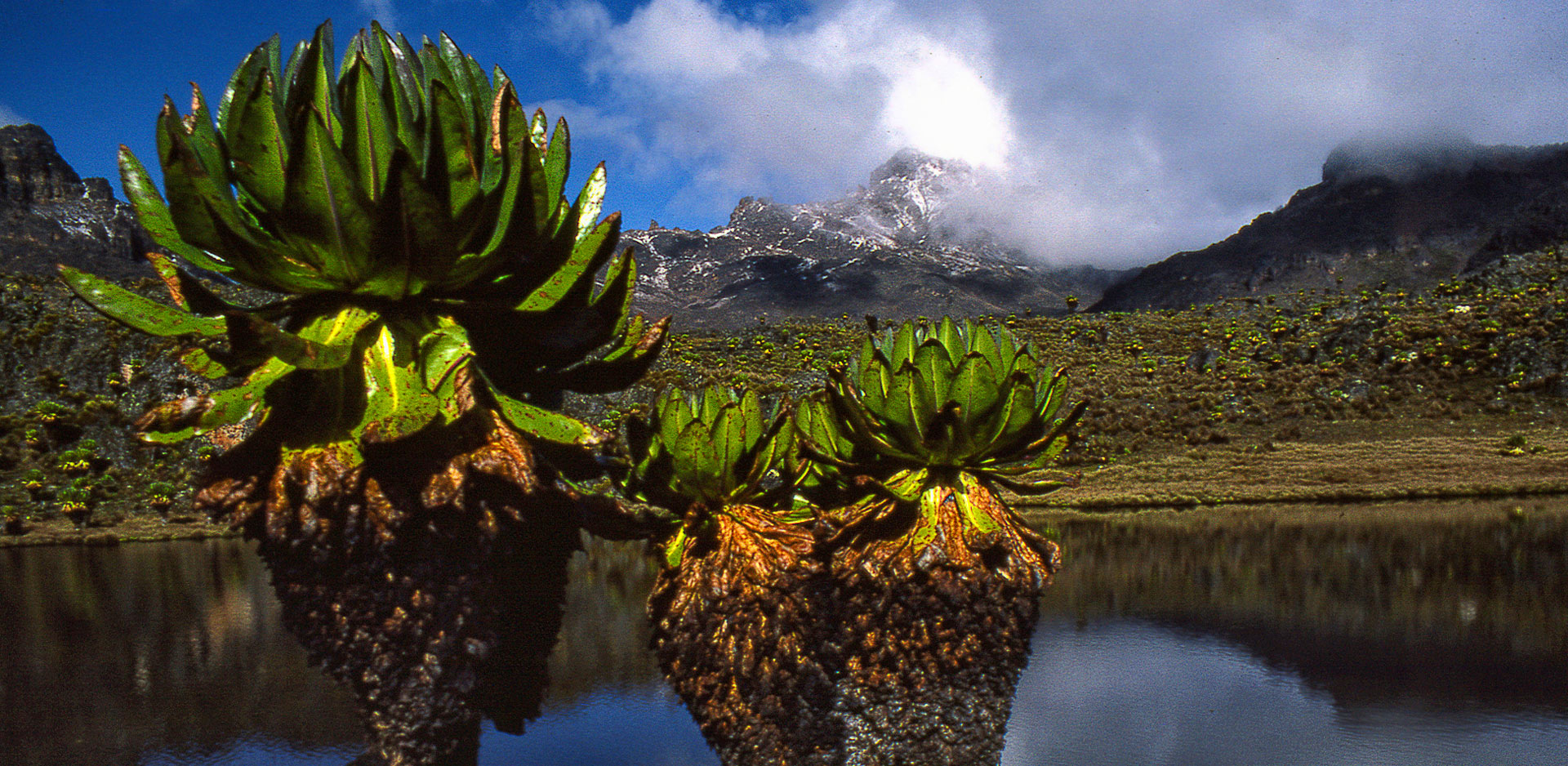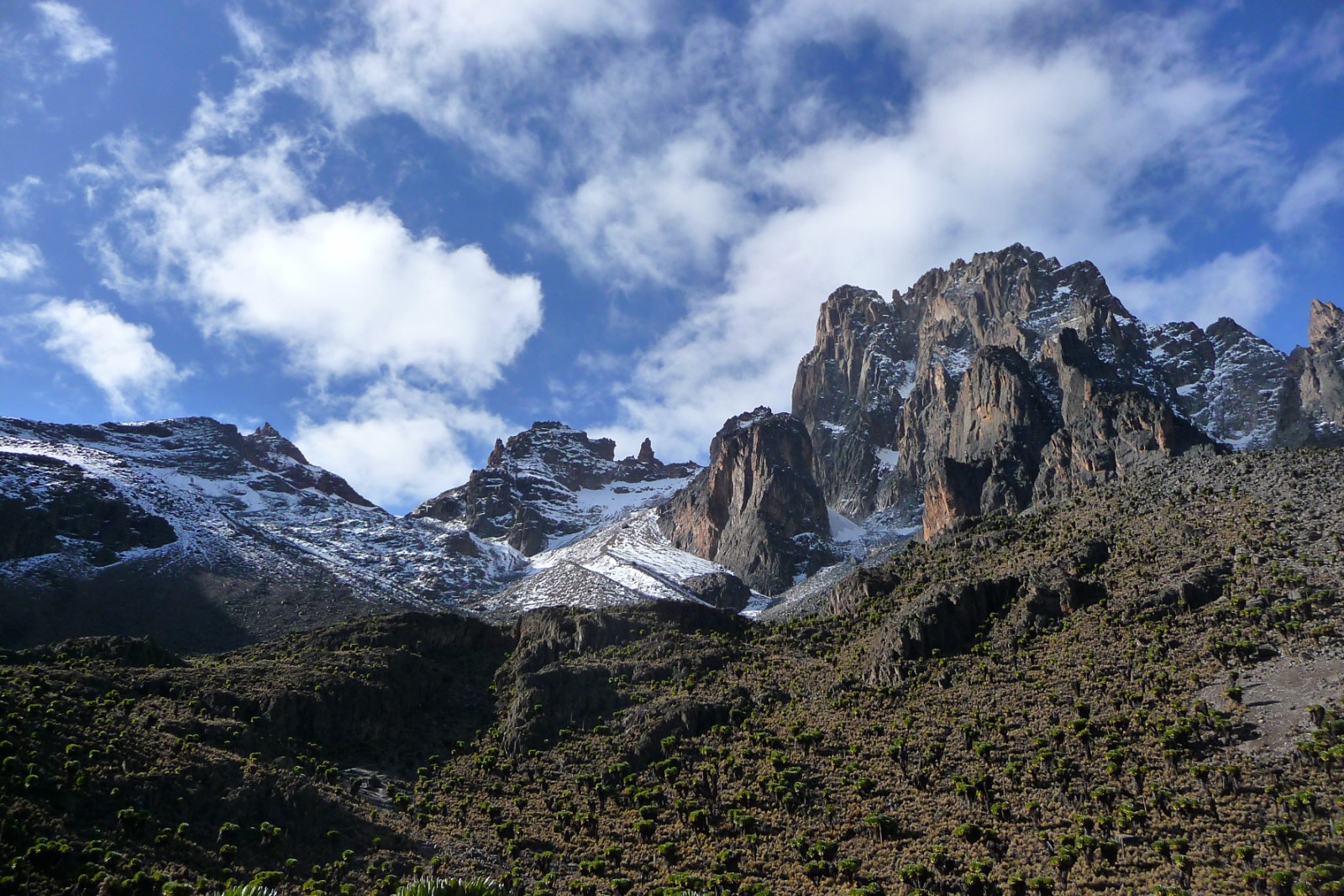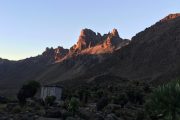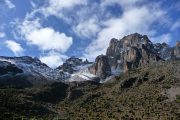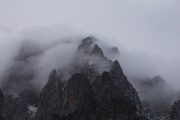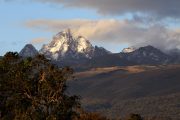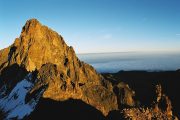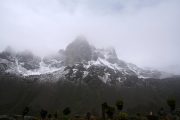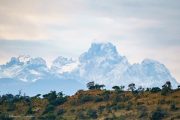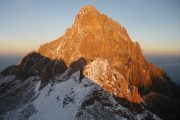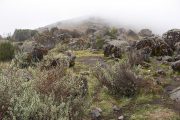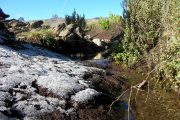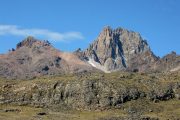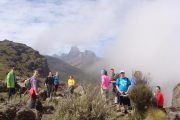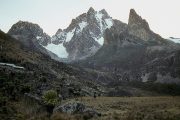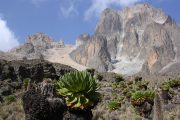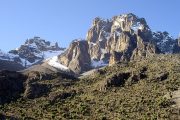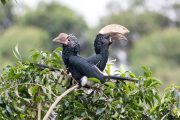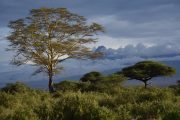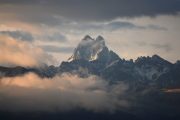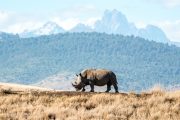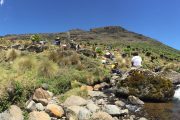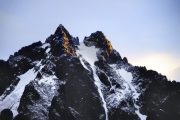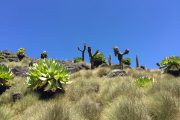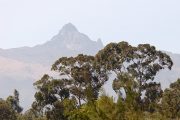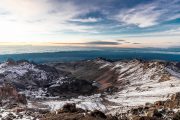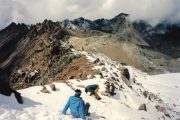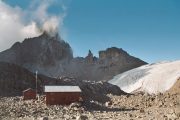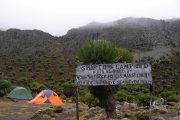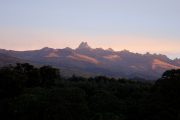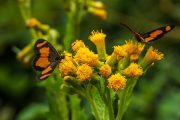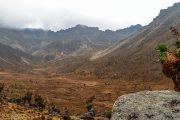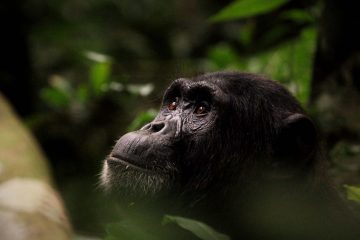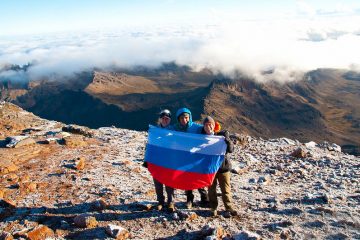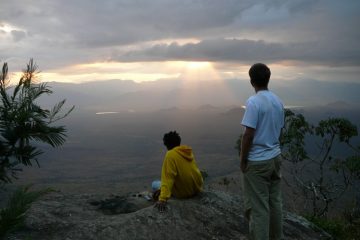Mount Kilimanjaro might be the highest but whatever Mount Kenya lacks in altitude, it makes up for in scenery and beauty. What Kilimanjaro offers in altitude, Mount Kenya surpasses in beauty. Mount Kenya measures a lofty 5,199m above sea level characterized by U shaped valleys, a few tarns here and there and hanging lakes mainly as a result of glaciation.
Due to its staggering altitudes, Mount Kenya has varied vegetation zones that are equally astonishing with every altitude that you gain. The various vegetation and climatic zones present on Mount Kenya include montane forest, dense bamboo, heathland and of course the Alpine Zone that is characterized by the presence of primal like vegetation, among them are the giant Lobelias and Senecios.
Mount Kenya’s has a number of peaks that crown its summit, Point Lenana standing at an altitude of 4985m, which is a moderate slope made of scree and rock outcrops beginning from the Shiptons Hut at 4,200m. The other two peaks Batian (5199m) and Nelion (5188m) are more demanding and challenging hence they require special skills and equipment to climb them.
Without following proper acclimatization procedures, it is possible to complete climbing Mount Kenya in as little as three or four days but you may need more days due to the dangers of altitude sickness.
All our Mount Kenya treks begin from Kenya’s capital city, Nairobi followed by a brief trek from Sirimon Gate to Old Moses Camp to acclimatize and avoid altitude sickness.
As you trek past the rainforest zone with closed canopies, everything clears up once you reach the open field of heath and moorland which gives way for a much clearer view of the summit. Various wild animals may be spotted, among them, elephants, Eland and buffaloes.
On leaving Likki North, the trail leads up the Mackinder Valley approaching Shiptons Camp, tucked at the foot of the summits.
Summiting Mount Kenya via the Naro Moru Route
Usually, the midnight or early morning summit attempt is mainly done so as to reach the summit by sunrise and avoid the cloud cover that appears mid in the morning. The trek towards the summit and peak of Mount Kenya, Point Lenana is challenging but worth the try as the views from the summit of the mountain are astonishing with the rising sun from the horizon of the Aberdares ranges causing the tarns to sparkle while it illuminates the valleys below the peak a distance away.
The Naro Moru route can be done in 4 days but we do recommend the 5-day route variation because of the extra acclimatization day which gives you a break from the long day trek up towards Shiptons to Old Moses to Shipton’s with overnight camping at Liki North Camp which is located at 3990m above sea level, then afterwards proceeding to Shipton’s the next day.
How to get to Mount Kenya
To get to Mount Kenya, you have to fly into Kenya first through the International Airports that serve as Kenya’s entry points like the Jomo Kenyatta International Airport in Nairobi and the Mombasa Moi International Airport in Mombasa. Many air companies fly into Kenya from all over the world e.g Virgin Atlantic, British Airways and Kenya Airways fly regular direct flights to Nairobi. There are other airlines that offer competitive prices for air tickets that make a stop from Qatar Airways, Ethiopian and Emirates.
Nairobi Jomo Kenyatta airport is a ½ hr drive away from the capital city of Kenya, Nairobi with a distance of about 16km.
This 5 days Naro Moru route for climbing Mount Kenya includes pick up and drop off in the vicinity of Nairobi City by minibus, private car or 4wd Landcruiser.
Best time to climb Mount Kenya -Naro Moru Route
The best time to climb Mount Kenya via the Naro Moru route is during the dry months of January to February. Mount Kenya can be climbed all year round, any time of the month but of course, there are better months for climbing the mountain than others. There are least beast times of the year than others depending on the weather on those particular months. The rainy seasons during the months of April and May are the long rain seasons and hence the least favourable time of the year to climb Mount Kenya. Summer months of July, August and September are also good for climbing the mountain via the Naro Moru Route. If you plan to climb Mount Kenya during the wet and rainy seasons, it would be wiser to carry along waterproof gear and garters.
Is the Naro Moru Route suitable for me?
This 5 day Mount Kenya – Naro Moru route trek is probably one of the most accessible and rewarding mountains climbs in the world, but it needs proper preparation and planning for you to enjoy more. With proper planning and preparations, you will have an upper hand in combating, minimising and avoiding is altitude sickness. 5-day Sirimon Naromoru via Likki North is designed to follow proper acclimatization procedures that prove to be very beneficial to climbers. All you have to do is to follow the instructions of your guide, climb slowly and drink as much water as possible. Remember, climbing Mount Kenya is not a race, and you do not to be superhuman fit to climb Mount Kenya, if you can walk for 6-8 hours a day comfortably then you are able to tackle Mount Kenya. Age is not really an obstacle, children as young as 10 and adults as old as 80 have climbed Mount Kenya.
Always cross-check your kit and make sure you have all the essential and required gear. Be mentally and physically prepared, you will need both the physical and mental stamina to climb Mount Kenya. Logically, you will go for days without having a shower, sometimes up to 4 or 5 days. Mount Kenya facilities are pretty basic, from the toilets to the huts, it is recommended that you bring wet wipes for body hygiene. last but not least, bring a proper sleeping bag for high altitude mountaineering purposes.
Safety for climbing Mount Kenya
For the latest and official travel advice from the Foreign and Commonwealth office please check www.gov.uk/travelaware

